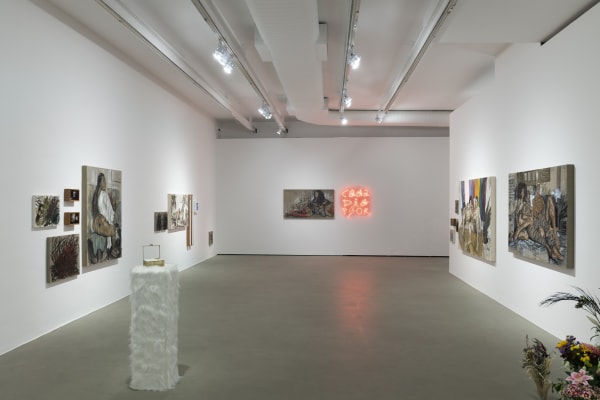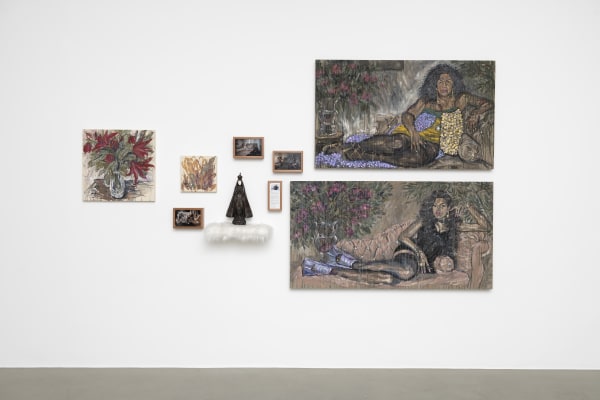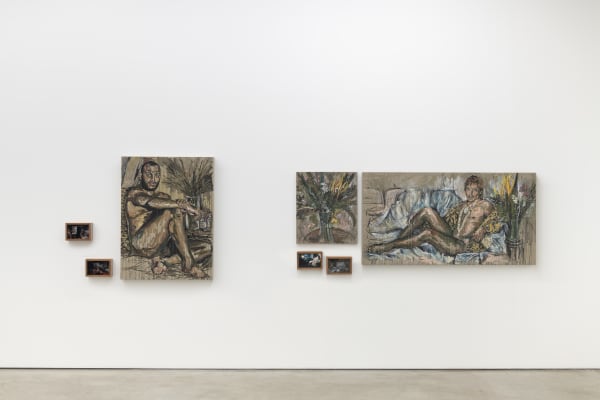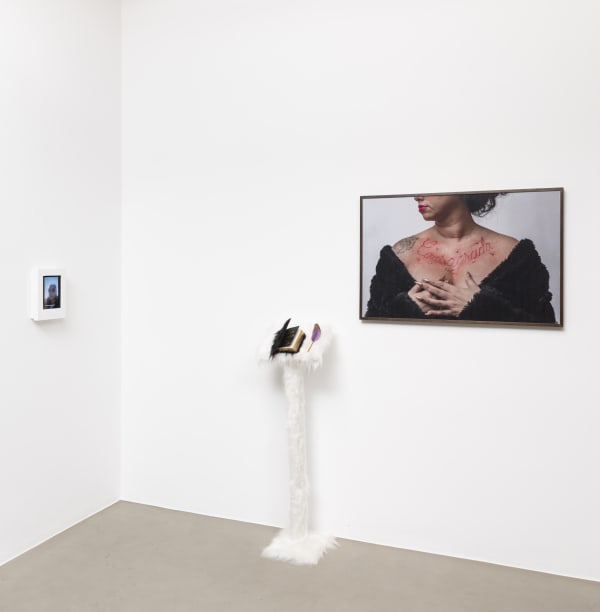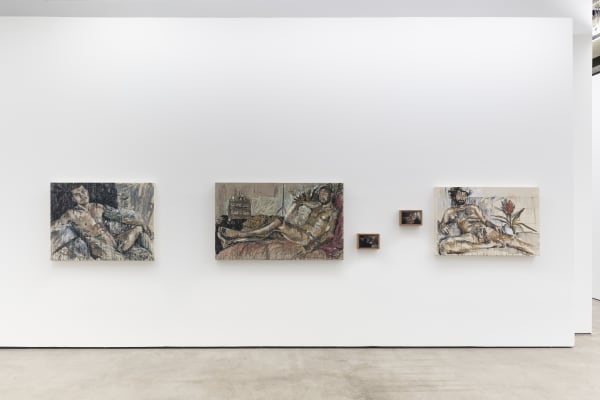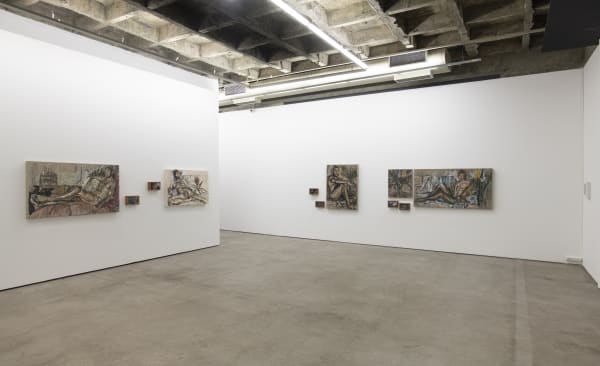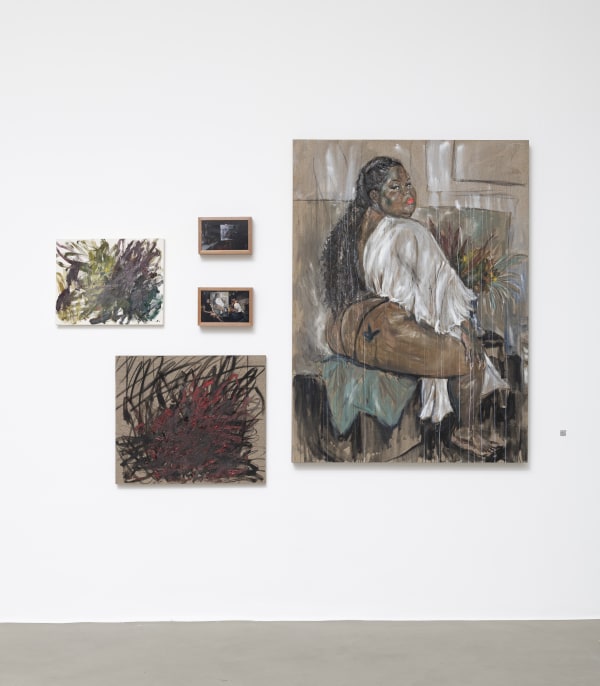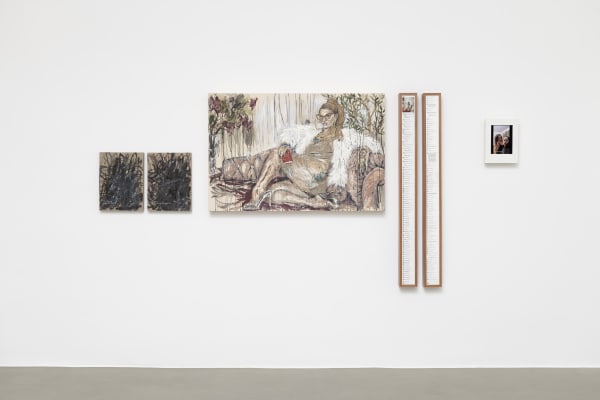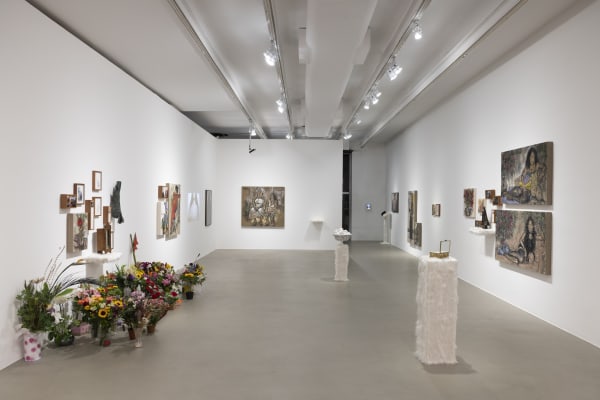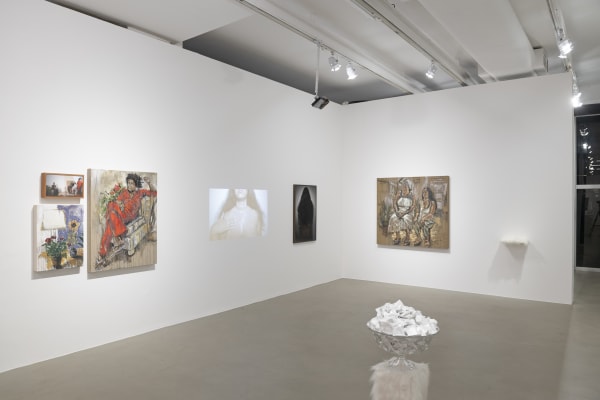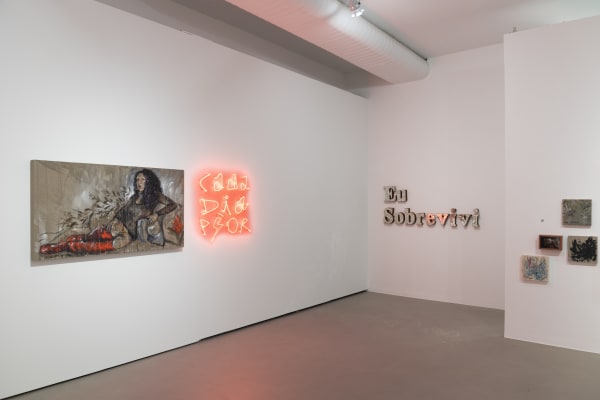To flaunt is to be alive: Ostentar é estar viva
Galeria Luisa Strina is pleased to present the first solo exhibition by artist and activist Panmela Castro, bringing together works produced last year ranging from performance to painting, passing through traditional supports, and unorthodox media.
Author of a confessional and autobiographical work, Panmela began her journey in the suburbs of Rio de Janeiro. In recent years, her work has achieved international repercussions not only in the art system but also among sectors that fight for human rights of historically marginalized and peripheral groups – as her own biography tells us.
Ten years ago she founded the Rede Nami, a project that through art raises critical awareness against gender violence. Her multidisciplinary activities have taken her to international congresses, contemporary art institutions and urban culture events around the world. An example of this is the documentary “We Are One” (2020), by director Stéphane de Freitas, a French production by Netflix.
To Flaunt is to be alive brings the aesthetic experimentation of Panmela Castro and the social impulse of her actions. The exhibition presents itself as a grand narrative of encounters, rituals, and transformation processes. A constellation that speaks of relationships of trust and care chains.
In addition to many paintings, including portraits and abstract canvases, there are objects in bronze, mirrors, wood, neon, jewelry, ornaments, pixo, stories from social networks, print-screens, video… A profusion of supports and visualities that incorporates the artist’s experiences with people from different circles, during the events that converged to the present exhibition. Therefore, this solo show not only speaks about its author. The discourse of sovereignty over herself is materialized in works of art featuring images of those other individuals, inhabitants of the exhibition.
Curated by Daniela Labra, To Flaunt is to be alive is a self-referential and mediatic exhibition, inspired by Gangstar, spiritualist, queer, digital, academic, grafitti, and other visual languages. Its works and environments embody the complex multiplicity of contemporary culture, joining the aesthetics of the “Now” with accounts and existences that assert themselves in the world in a political, original, and passionate way.
[Daniela Labra]


